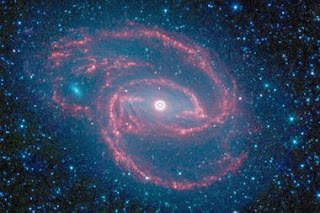
Astronomers have discerned evidence for supermassive black holes at the hearts of some of the earliest galaxies detected to date – budding when the universe was between 700 million and 950 million years old.
The detection, announced Wednesday and appearing in Thursday's issue of the journal Nature, already is hinting at answers to longstanding riddles surrounding the origin of supermassive black holes, which lurk in the cores of all galaxies.
The observations also are helping to tease out the role these black holes in galactic centers might have played in lighting up the universe following an early period known as the "dark ages."
The results mark "the first time we've caught black holes in the act of vigorously growing in the early universe," along with their host galaxies, says Mitchell Begelman, an astrophysicist at the University of Colorado at Boulder.
Read More
The detection, announced Wednesday and appearing in Thursday's issue of the journal Nature, already is hinting at answers to longstanding riddles surrounding the origin of supermassive black holes, which lurk in the cores of all galaxies.
The observations also are helping to tease out the role these black holes in galactic centers might have played in lighting up the universe following an early period known as the "dark ages."
The results mark "the first time we've caught black holes in the act of vigorously growing in the early universe," along with their host galaxies, says Mitchell Begelman, an astrophysicist at the University of Colorado at Boulder.
Read More